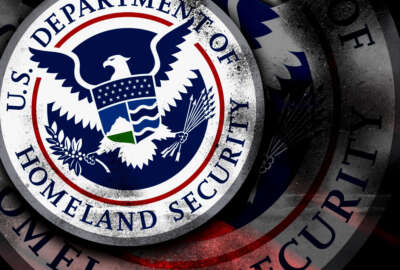The Homeland Security Department is trying to ensure that any progress it’s made on the agency’s “Unity of Effort” initiative endures the upcoming presidential transition.
The department is proposing a new common appropriations structure — designed to streamline acquisition for all DHS components except the U.S. Coast Guard— in President Barack Obama’s fiscal 2017 budget request.
“Today we focus departmentwide on our mission needs, rather than through component stovepipes,” DHS Secretary Jeh Johnson said during his “State of Homeland Security” speech at the Wilson Center Feb. 11 in Washington. “With the support of Congress, we are moving to a simplified budget structure, in which line items mean the same across components.”
DHS is proposing four new common accounts:
- Operations and support
- Procurement, construction and improvements
- Research and development
- Federal assistance
“Within each appropriation, the budget also aligns DHS’ programs, projects and activities structure within DHS mission areas, a change that will encourage consistency and alignment between resource decisions and frontline mission needs,” the President’s proposal said.
The department’s old budget structure, made up of more than 70 different appropriations and 200 programs, projects and activities, was often confusing and frustrating for members of industry.
Johnson began laying the groundwork for a new appropriations structure when he established the Joint Requirements Council last year. The group brought together leaders from all 22 agency components to look at what DHS buys as a whole and how it can tailor its acquisition strategy toward a “department or mission-first” mentality.
This year, DHS is asking that Congress officially authorize the Joint Requirements Council and other joint task forces in legislation, Johnson said. A congressional authorization would help codify the work the department has done on “Unity of Effort” and help future DHS leaders continue the work Johnson and his team already started.
Johnson introduced the “Unity” concept in 2014, in an effort to strengthen the ties among the department’s 22 component agencies, each with their own disparate missions. The goal is to bring some budget and decision-making together under one roof.
The initiative and Johnson’s push to improve employee morale go hand-in-hand, he said. DHS posted the lowest marks of any other large agency in the 2015 Federal Employee Viewpoint Survey.
“We’ve been on an aggressive campaign to improve morale over the last two years,” Johnson said. “It takes time to turn a 22-component workforce of 240,000 people in a different direction. Though the overall results were still disappointing, we see signs of improvement.”
The department also will solidify another part of the unification effort when it finishes consolidating headquarters to the St. Elizabeths campus. The President’s budget proposal includes $199.4 million for this project. The Coast Guard alone estimates it will save $3.9 million in 2017 once it finishes consolidating its offices and personnel to St. Elizabeths, the proposal said.
Raising the stakes on cyber, counterterrorism
Like nearly every agency, cybersecurity will play a bigger role for the Homeland Security Department in 2016 and 2017, according to the President’s budget request.
DHS is asking for $471.1 million to continue to support the National Cybersecurity Protection System, including the department’s EINSTEIN intrusion and detection prevention system.
EINSTEIN 3A protects 50 percent of agencies so far, Johnson said. DHS is planning to bring all agencies on board by the end of this year.
DHS is also planning to implement phase two of the Continuous Diagnostics and Mitigation program to all agencies by the end of the year. The President’s budget proposal calls for $275 million to support CDM.
Johnson said he will also continue to push Congress to reorganize the National Protection and Programs Directorate (NPPD), the DHS component that houses the National Cybersecurity and Communications Integration Center (NCCIC) and specific cyber threat detection programs like EINSTEIN and CDM.
The department’s proposal would move the NPPD from a headquarters element to an operations element called the Cyber and Infrastructure Protection Agency.
DHS also has a role in nearly every aspect of the President’s new Cybersecurity National Action Plan, Johnson said.
The department would add 38 more cyber response teams, up from the 10 teams that exist now, he said. DHS is asking for $37 million to expand those groups, the budget request said.
“We’re doubling the number of cybersecurity advisers to in effect, make house calls to assist private sector organizations with in-person, customized cybersecurity assessments and best practices,” Johnson said.
The department’s workforce as a whole could increase by 2.2 percent, according to the President’s request.
The increase is likely due to the ever-changing nature of threats, which Johnson warned will prompt a new kind of response and mindset from the department.
“We are in a new phase in the global terrorist threat, requiring a whole new type of response,” he said. “We have moved from a world of terrorist-directed attacks to a world that includes the threat of terrorist-inspired attacks.”
Copyright
© 2024 Federal News Network. All rights reserved. This website is not intended for users located within the European Economic Area.
